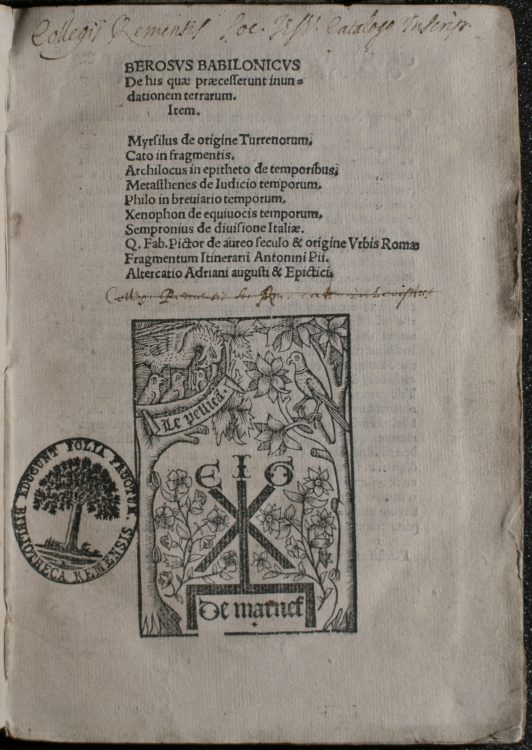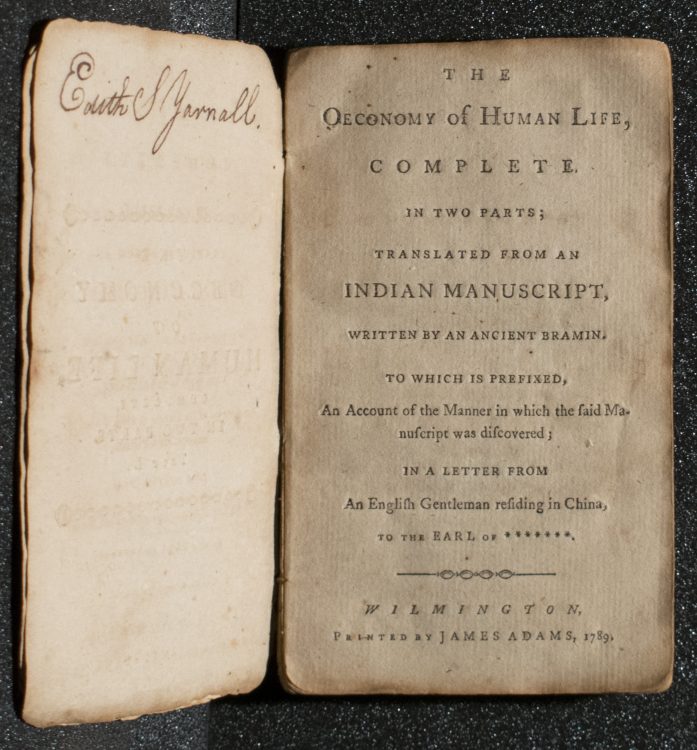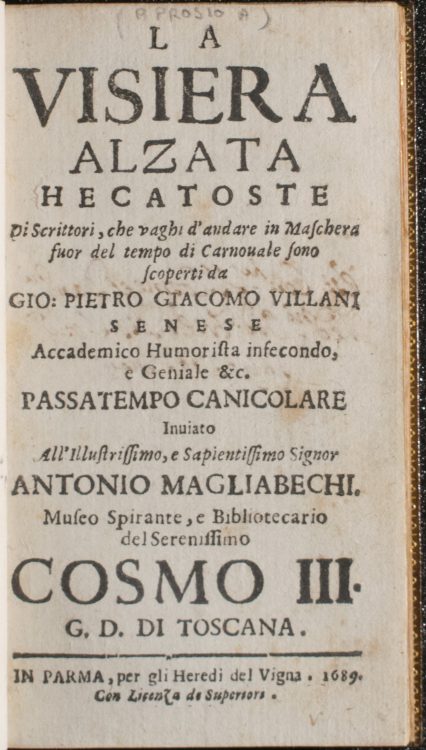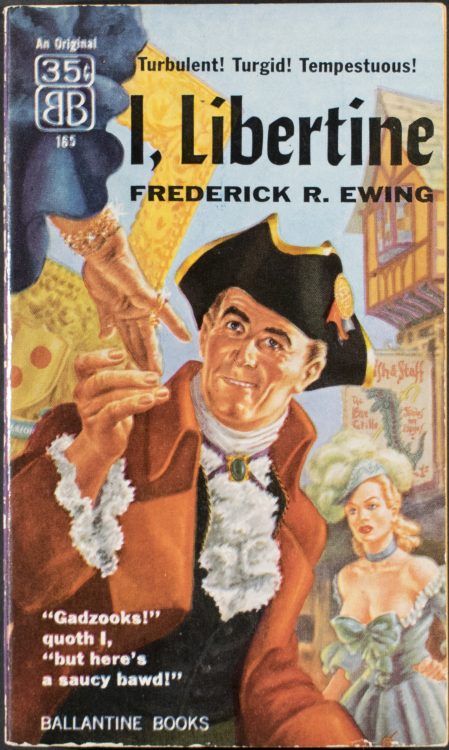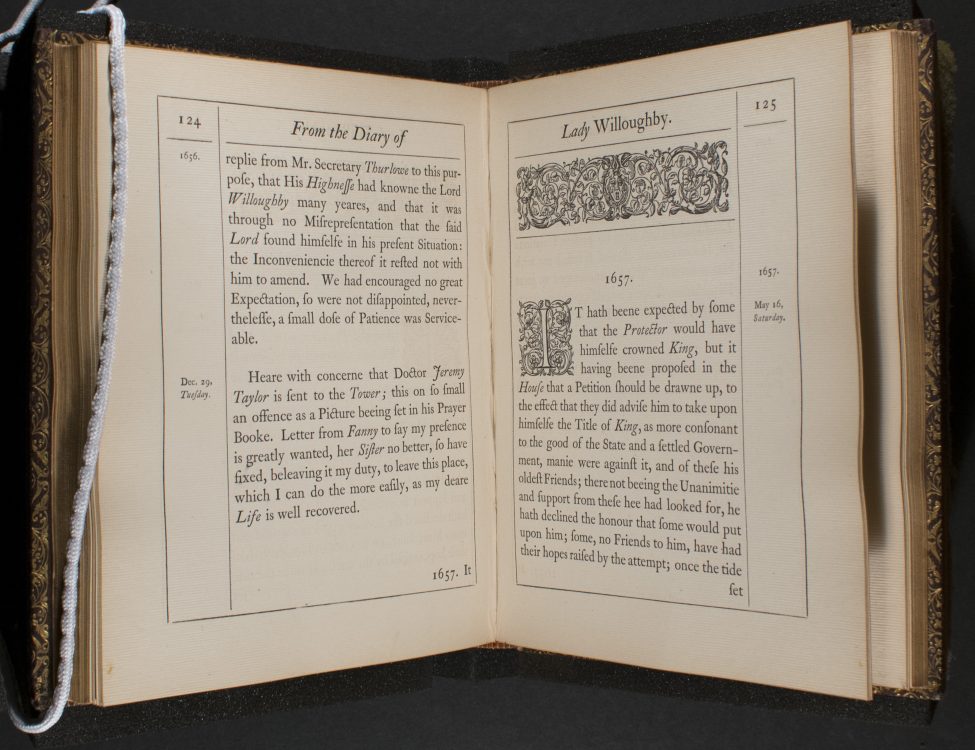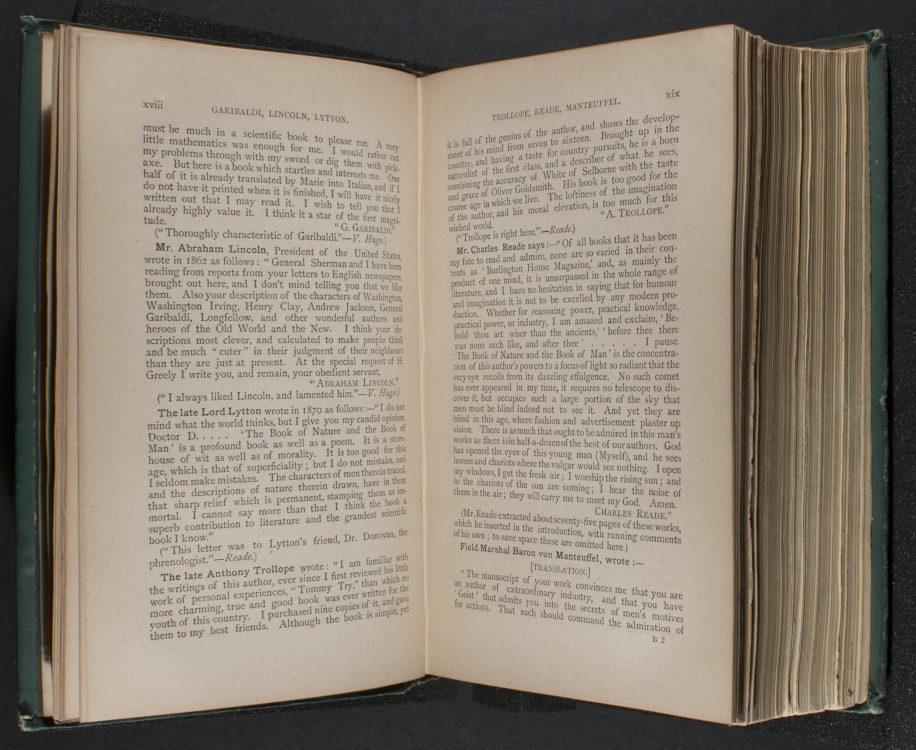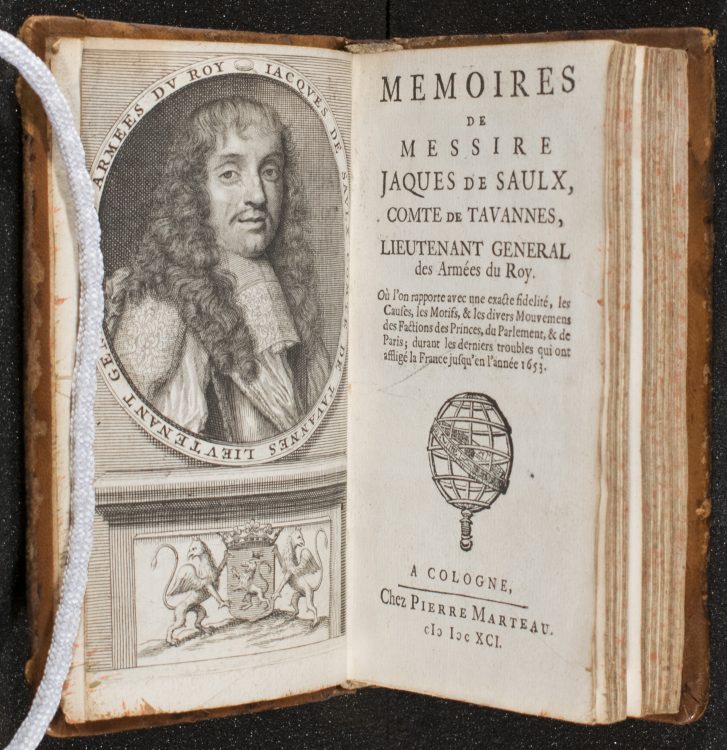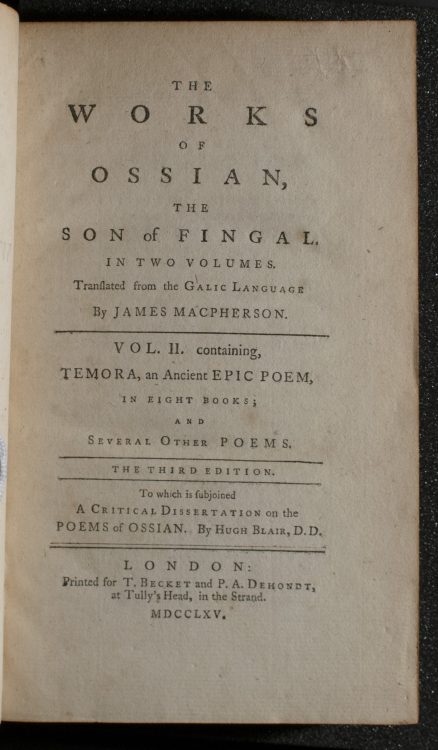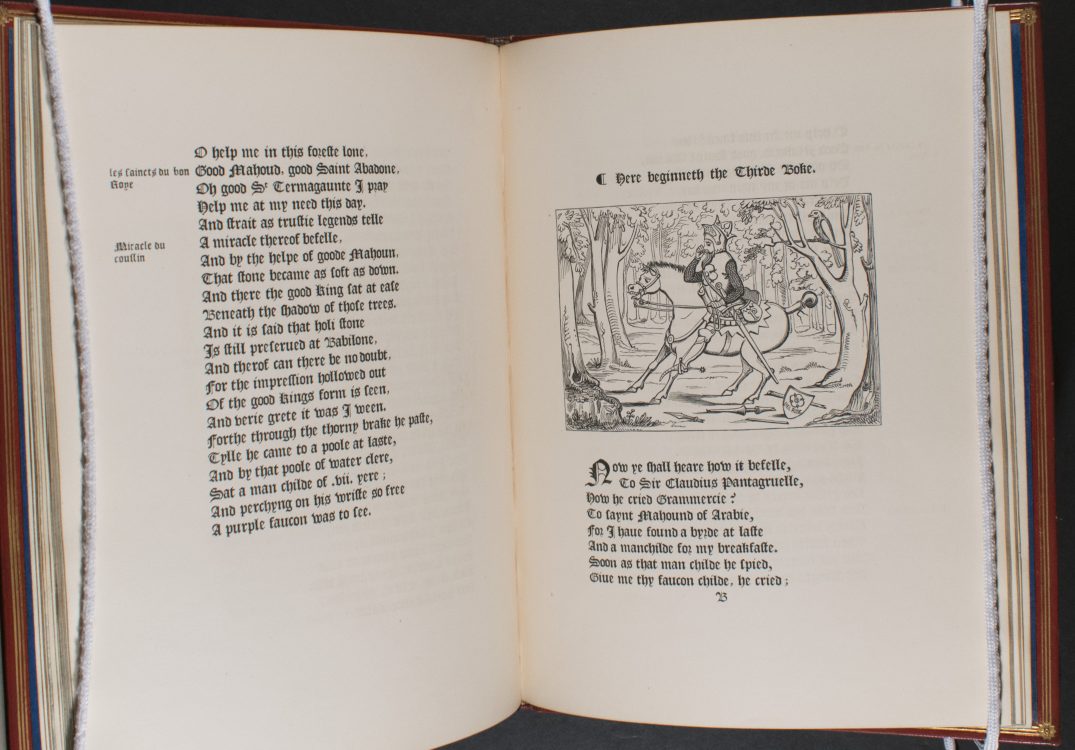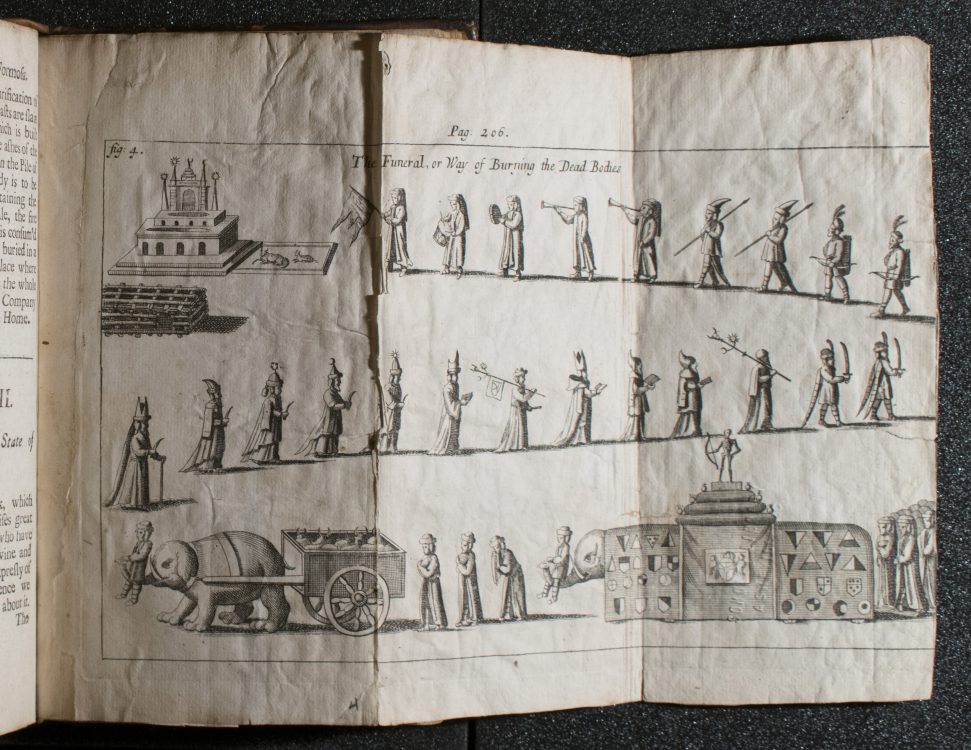[Giovanni Nanni (1432-1502)]
Berosvs Babilonicvs De His Quae Praecesserunt Inundationem Terrarum. Paris: Ioannem Marchant for Godofredi de Marnef, 1510.
Giovanni Nanni tried to present this work as a series of ancient texts written by Berossus, a Babylonian writer who lived during the third century BCE. At the time, scholars had mixed opinions about this attribution. In reality, Berossus’ writings survive only as fragments. This text, which Nanni had actually written on his own, presented a rewriting of pre-Christian history, mixing the Bible and Greco-Roman mythology into one narrative. The attribution to Berossus was, presumably, intended to lend a greater air of authenticity.
[Robert Dodsley (1704-1764)]
The Oeconomy of Human Life, Complete in Two Parts. Wilmington, DE: James Adams, 1789.
A treatise on morality, Oeconomy was presented as if it were a translation of an ancient Indian manuscript, which itself had been discovered by an anonymous Englishman living in China. The whole thing had actually been written recently by Robert Dodsley, an English bookseller and writer. Its first published appearance was in 1750. At the time, it was common for authors to publish their books anonymously, and it was also fairly common to falsely attribute them to another source. In the case of Oeconomy, rumors abounded widely about the book’s true authorship, with the Earl of Chesterfield (1694-1793) being misidentified as the author. This speculation probably also helped generate interest and stimulated further sales of the book. By the end of the eighteenth century, Oeconomy had gone through over 200 editions and numerous translations.
[Angelico Aprosio (1607-1681)]
La Viseria Alzata Hecatoste Di Scrittori. Parma: Per gli Heredi del Vigna, 1689.
This volume was the first printed bibliography of anonymous and pseudonymous books. Fittingly, the bibliography itself was also issued under a pseudonym, Giovanni Pietro Giacomo Villani. Its true author, Angelico Aprosio, was a medievalist, journal editor, polemicist, scholar, and book collector.
Charles Boss
Daily Report of Charles Boss. Life and Adventures on the Frontier. Bound manuscript, [circa 1884-1893].
Charles Boss served as a private in the United States Army from 1866-1884 in the Western territories. This volume purports to be his diary from that period. Boss was a real person, and his military service records line up with the general period and places described in his journal. The journal, though, presents a mixture of fact and fiction. Some entries are very basic, limited to a single line such as “sic in quarters” or “No duty, good Weather.” Others include verifiable details such as the names of other soldiers and the location of his unit. But he also includes a great deal of impossible exaggerations and wild stories, with the narrative becoming all the more unbelievable as it goes on. Apparently, Boss created this embellished account sometime after his discharge, using the real details of his service as a starting point. Some of the highlights of his fictionalized version include a first-hand account of the Battle of Little Bull Horn (as told by a Native American who fought there), an attack by twenty-five wolves, and “Liver-eating Johnson,” a man who would devour his enemies’ livers raw on the battlefield.
In 1941, Alice Steinlein, who was then the owner of the manuscript, tried to publish the text through Oxford University Press. The press showed enthusiasm for the project until their reviewers spotted the fictional nature of Boss’ account, at which point the press regretfully replied “that we must let the project go by for, as you know, we do not publish fiction at all.”
[Theodore Sturgeon (1918-1985)]
I, Libertine. New York: Ballantine Books, 1956.
I, Libertine began as an imaginary book. Jean Shepherd (1921-1999), a storyteller and radiohost, was irritated by the way that lists of best-selling books were compiled. Rather than tally the number of copies sold, best-seller lists also accounted for how many customers were asking about particular books in bookstores, which meant that the lists were inherently inaccurate. As a prank, Shepherd asked his listeners to go to their local bookstores and ask for a book that did not exist: I, Libertine, which came complete with a fabricated author and some plot details, to give it a sense of reality. (The book was also said to have been banned in Boston). The demand for this imaginary book was so great that it eventually ended up on the New York Times bestseller list. The interest in this hoax finally prompted the publisher Ian Ballantine (1916-1995) to hire the novelist Theodore Sturgeon to write a novel based on Shepherd’s plot summary and thus the imaginary book became a reality.
[Hannah Mary Rathbone (1798-1878)]
Some Further Portions of the Diary of Lady Willoughby Which Do Relate to Her Domestic History and to the Events of the Latter Years of the Reign of King Charles the First, the Protectorate, and the Restoration. London: Longman, Brown, Green, & Longmans, 1848.
This book claims to be a hitherto unpublished diary written by an English woman between 1635 and 1663. If genuine, it would have been a valuable discovery, providing new insight into daily life during the period of the English Civil Wars. In reality, it was composed in the 1840s and published with a fraudulent attribution. The true author, Hannah Mary Rathbone, had read many of the genuine histories and memoirs produced during the period, and used those as inspiration in writing a convincing imitation. Public reception was mixed. Some readers believed that it was an authentic account; others were outraged that the author and publisher had conspired to publish a fraudulent text.
Charles I, King of England (1600-1649). [Authorship disputed].
The Povrtraictvre of His Sacred Maiestie in His Solitudes and Svfferings. [s.l.: s.n.], 1648.
This volume, commonly known as the Eikon Basilike (“Image of the Sacred King”), is allegedly a series of meditations written by King Charles I of England in the days before his execution. (After being deposed in the English Civil Wars, he was accused of high treason and sentenced to death.) The book was published mere days after his death by beheading. It presented the king as a devout, caring, charitable figure, who, though defending the royalist cause, cared so deeply for his people that he above all wanted them to proceed to live in peace and harmony. It served as a piece of royalist propaganda, drumming up sympathy and support for the dead monarch. Its authorship has been disputed ever since, with several authors publishing works arguing for and against Charles’ authorship in the following year. John Gauden (1605-1662), the Bishop of Worcester, claimed to have been the true author of the Eikon Basilike, but he offered little evidence beyond his own assertions.
Charles Ottley Groom-Napier (1837-1894)
Works of H.R. and M.S.H. the Prince of Mantua and Montferrat, Prince of Ferrara, Nevers, Réthel, and Alençon. London: Dulau and Co, 1886.
This volume contains the collected works of Charles Ottley Groom Napier. Groom Napier wrote prolifically on the natural sciences, and, for much of his career, he was a conventional, well respected writer. In the 1870s he assumed a series of self-aggrandizing and entirely imaginary titles. He styled himself the Prince of Mantua and Montferrat, as well as the Prince of Ferrara, Nevers, Réthel, and Alençon. He grew obsessed with his genealogy, and insisted that he was descended from various European royal families and that he could trace his lineage all the way back to the Biblical King David. Groom-Napier prefaced this book with sixty-four pages of testimonials provided by such illustrious individuals as Victor Hugo, Elizabeth Barret Browning, Charles Darwin, Ralph Waldo Emerson, Pope Pius IX, and Abraham Lincoln. All of these reviews were fraudulent, all of them invented by Groom-Napier. Conveniently for him, none of these people were available to dispute the attribution, since they were all dead.
Jacques de Sauix, Comte de Tavannes (1620-1683)
Memoires De Messire Jacques De Saulx, Comte De Tavannes, Lieutenant General Des Armées Du Roy. A Cologne: Chez Pierre Marteau, 1691.
Although the authorship of this volume is legitimate, the publisher’s imprint is not. The alleged publisher, Pierre Marteau, was a fictitious imprint that was used from the seventeenth century onwards by a variety of Dutch, French, and German printers in order to avoid being identified with their more controversial publications. Generally, the Marteau imprint was used to present works that were either politically controversial or sexually explicit. The first Marteau imprints appeared in the 1660s and were probably printed in Amsterdam, possibly by the publishers Louis and Daniel Elzevier. Numerous other publishers followed suit, hiding their own publications behind the same imaginary publishing firm, with Marteau imprints appearing as late as 1770. This volume, the posthumously published memoirs of a French lieutenant-general, was political: it presented an account on the causes and motives behind the different political factions in France, from 1653 to the present.
[Thomas Chatterton (1752-1770)]
Poems Supposed to Have Been Written at Bristol, by Thomas Rowley, and Others, in the Fifteenth Century. London: Printed for T. Payne and Son, 1777.
Thomas Rowley was said to have been an English monk who lived in Bristol from about 1400 to 1470, where he wrote a series of poems, plays, and nonfiction works. In the late eighteenth century, Thomas Chatterton announced that he had discovered a series of Rowley manuscripts among papers left behind by his deceased father. Except Chatterton hadn’t really found anything: Rowley had never existed, and Chatterton had created the Rowley manuscripts as an elaborate literary forgery. To make the manuscripts look authentic, Chatterton used old blank pieces of parchment and vellum and wrote on them using artificially aged ink. The artifice was imperfect: Chatterton was still writing in an eighteenth century style of English, with the occasional archaic word thrown in to make the writing look old-fashioned.
Chatterton showed the Rowley manuscripts to local antiquarians, who were excited to read newly discovered texts. He tried to extend his reach by showing some of the manuscripts to the author Horace Walpole (1717-1797), but Walpole denounced them as fraudulent. The poems were never published during Chatterton’s lifetime. In 1770 he committed suicide and, seven years later, they were published in a volume that presented them as poems “supposed to have been written” by Rowley in the fifteenth century. The book’s editors mentioned that the authorship was questionable. The authorship was almost immediately denounced, and a second printing, issued a year later, included an appendix concluding that the Rowley attribution was almost certainly fraudulent. Still, some critics continued to argue for Rowley’s authorship well into the nineteenth century. Rowley/Chatterton’s writings were also praised for their own poetic qualities, with Chatterton becoming an icon to Romantic poets such as Keats and Wordsworth.
[James Macpherson (1736-1796)].
The Works of Ossian, the Son of Fingal. In Two Volumes. Translated from the Galic Language. London: Printed for T. Becket and P.A. Dehondt, 1765.
In 1760, James Macpherson published a series of poetry fragments that he had translated from Gaelic. He claimed that the text was derived from fragments of ancient manuscripts he had discovered while traveling in the Scottish Highlands. The response to his fragments was positive, and people seem to have regarded them as authentic. Two years later, Macpherson announced that he had discovered the complete manuscript of an ancient Gaelic epic written by Ossian. A second epic, Temora, was published the following year. Although enormously popular, the epics prompted some skepticism from scholars, who thought it unlikely that they could be genuine. Scholars trying to investigate the poems found it especially suspicious that Macpherson refused to let them examine the original manuscripts. The controversy over the poem’s authorship was widely debated and only intensified after Macpherson’s death. It was not until near the end of the nineteenth century that a general consensus emerged that Ossian was imaginary and that Macpherson was the real author of the poems. In places, Macpherson appears to have cribbed from actual Gaelic ballads – sometimes borrowing a plot idea, other times incorporating passages into his narrative – but the end result is very much Macpherson’s own creation.
[Reginald Heber (1783-1826) and Robert Curzon (1810-1873)]
The Lay of the Purple Falcon: A Metrical Romance, Now First Printed from the Original Manuscript, in the Possession of the Hon. Robert Curzon. London: Printed by W. Nicol, 1847.
According to this book’s introduction, The Lay of the Purple Falcon is translated from a medieval manuscript that was found in Partram. The first half is said to have been written by Reginaldus Episcopus C____ and the remainder was completed by Robert the Rhymer, a clerk. In reality, this is a poem written in an archaic style, begun by Reginald Heber and finished by Robert Curzon in the nineteenth century. The manuscript does exist (it is now owned by the British Museum). It is a nineteenth century imitation of fifteenth century handwriting written on vellum. It is not written in Curzon’s hand, but he probably commissioned it. The woodcuts printed here are said to be copies of illustrations found in the original manuscript. The editor admits that “they have not succeeded in preserving either the boldness, or the character of the originals,” which is accurate, since, stylistically, they look nothing like an illustration that would have been produced in the Middle Ages. The book was probably not created with the intent to deceive anyone and certainly was not meant for a wide audience. It was printed in an edition of only thirty copies, which Curzon circulated among his friends. In one of his letters he referred to it as a “little joke.”
George Psalmanazar (ca. 1679? – 1763)
An Historical and Geographical Description of Formosa. London: Printed for Dan Brown, G. Strahan and W. Davis, Fran. Coggan, and Bernard Lintott, 1704.
The man known as George Psalmanazar was born somewhere in northern France. His real name and origins are still a mystery. His pseudonym, Psalmanazar, was modeled after the name of an Old Testament figure, Shalmaneser, king of Assyria. While traveling through Germany, Psalmanazar pretended that he was from Japan, and had recently converted to Christianity and learned Latin. (He thought it would be easier to beg for alms if he had an exciting origin story). To this end, he invented an alphabet and a series of words that he thought would sound like they were Japanese. He enlisted in a regiment fighting for the Dutch and, while in the Netherlands, met Alexander Innes, a Scottish chaplain, who quickly recognized Psalmanazar’s deception and became his co-conspirator. Innes convinced Psalmanazar to change his birthplace from Japan to Formosa (present-day Taiwan), since Formosa was even more remote and thus more exotic to a European audience. They traveled to England, where Psalmanazar became a celebrity, speaking to audiences about his time in Formosa. He published this book, which provided an account of Formosa, all of which he had made up. Most of the learned community was well aware of the fact that Psalmanazar was a fraud, but his book was a popular success, aided by the sensationalist details he included. Psalmanazar wrote of a land rife with polygamy, cannibalism, infanticide, and human sacrifice, with 18,000 children a year being sacrificed by decree of the state religion. The book was translated into French and German, to similar success. By 1711, though, the public, too, knew that Psalmanazar had invented the entire narrative, and his popularity faded. Ironically, he later made a living as a writer, and achieved some standing as a scholar. In later years, regretting his deception, he wrote a memoir describing the truth behind his deeds, which was published posthumously. Even then, he declined to reveal his true name.

